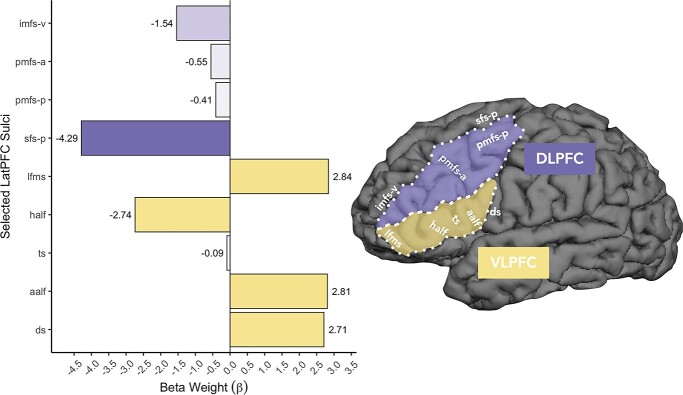Fig. 4.
The relationship among function, sulcal morphology, and WM skills in the developing LPFC. A) Barplot comparing the beta weights for Digits Backward for each of the 9 left-hemisphere sulci identified by the model. Negative and positive beta-coefficients represent negative and positive relationships between sulcal depth and task performance, respectively. All 4 DLPFC (purple) sulci show negative relationships with verbal WM manipulation, whereas 3/5 VLPFC (yellow) sulci show positive relationships with verbal WM manipulation. Darker shades represent stronger beta-coefficients. These values are also shown in Fig. 3A. B) An example cortical surface reconstruction of a left hemisphere in an example 15-year-old (n039t2). Sulcal depth predicted WM skills in the ts, aalf, half, lfms, pmfs-p, pmfs-a, sfs-p, and imfs-v (white labels). The ds, aalf, half, lfms, and imfs-v form the boundaries of the functional clusters preferentially coding the serial order of visual stimuli in WM identified by Amiez and Petrides (2007) in mid-DLPFC and mid-VLPFC and have stronger relationships with verbal WM manipulation than the ts and pmfs-a, which fall within our modified versions of these functional borders in which the present versions extend more posteriorly. Purple: Based on macroanatomical definition of mid-DLPFC in Amiez and Petrides (2007), our DLPFC definition extends more posteriorly and includes sfs-p, pmfs-i, and pmfs-p. Yellow: Based on macroanatomical definition of mid-VLPFC in Amiez and Petrides (2007), our VLPFC definition also includes the ds. See Supplementary Fig. 3 for comparisons of sulcal definitions with Amiez and Petrides (2007).

